Kyoto 京都
- amandagoss
- Aug 7, 2016
- 9 min read
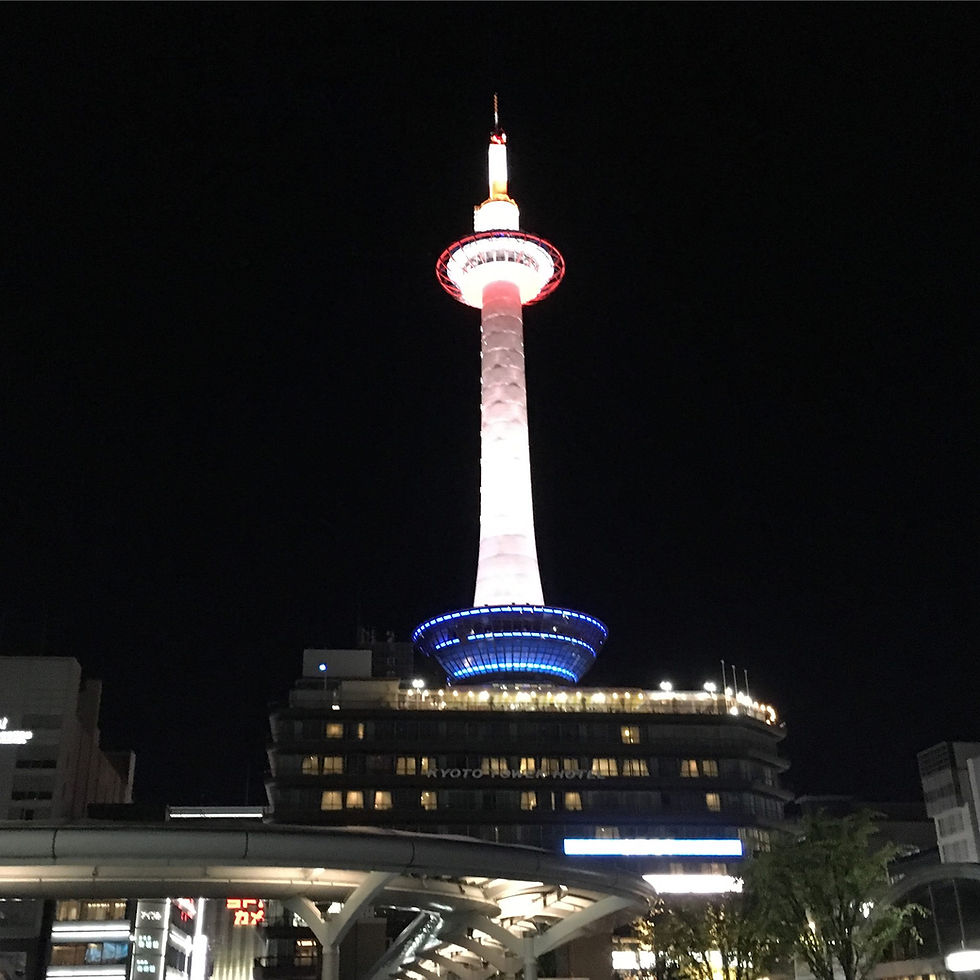
We made it! Finally as a group we arrived in our final destination Kyoto. Now if you are reading this post I suggest grabbing yourself a drink now, as this will by far be my longest post. I had mixed emotions about coming to Kyoto, on one hand I was excited to see a new city but on the other I was sad knowing that in just a few days time I would be heading home. I had gotten used to living with this amazing group of people and was sad that once I was back at home, everyone would again be busy with university. Knowing all to well for me that it means not having time to socialize. So the first thing on the agenda was getting yukatas (浴衣) for those who wanted to wear them during tonight's Gion Matsuri. A yukata is essentially a summer kimono, typically made of cotton. One thing I learnt about wearing yukata is that you must wear them with the left panel over the right. Wearing them the wrong way is considered extremely rude as right-over-left is how the dead are dressed in Japanese culture.
Once those that chose to buy yukatas were dressed and ready we made our way to the Yasaka Shrine (八坂神社). This is one of the main shinto shrines in Kyoto and overlooks the Gion district. It looked so pretty all lit up at night. Now the street had been closed off for the festival and food stalls had been set up. So with Angie, I explored the shrine. We also were able to see some performers, some performing kabuki and others taiko drums. I found the kabuki performance mesmerizing, it was lucky for me that I am tall and could see from a distance as the crowd around the stage was at least twenty deep. We also met a lovely gentlemen who had bought his budgerigar (Melopsittacus undulatus), or budgie for short to the festivities. Now this adorable bird is actually an Australian species and it was nice to be reminded of home. The budgies name was Pizza (ピザ). And I was fortunate enough to have him let me hold it. But as his name was Pizza, it reminded me of how hungry I was, so Angie and I grabbed some yakitori and shaved ice to eat. It was delicious.
After watching some of the performers we wandered around the main street, looking at all the shops. Angie and myself also bought matching paper crane earrings. Whilst walking to Starbucks for a caffeine fix, we could not believe our luck as we stopped at a set of traffic lights. A maiko (舞妓) or geisha in training walked straight past us. The Gion district is known for having geisha (or Geiko as they are reffered to in Kyoto), but I honestly never expected to see one. So filled with excitement we went to Starbucks, where we met up with Leon and chatted over coffee before heading back to our accommodation.





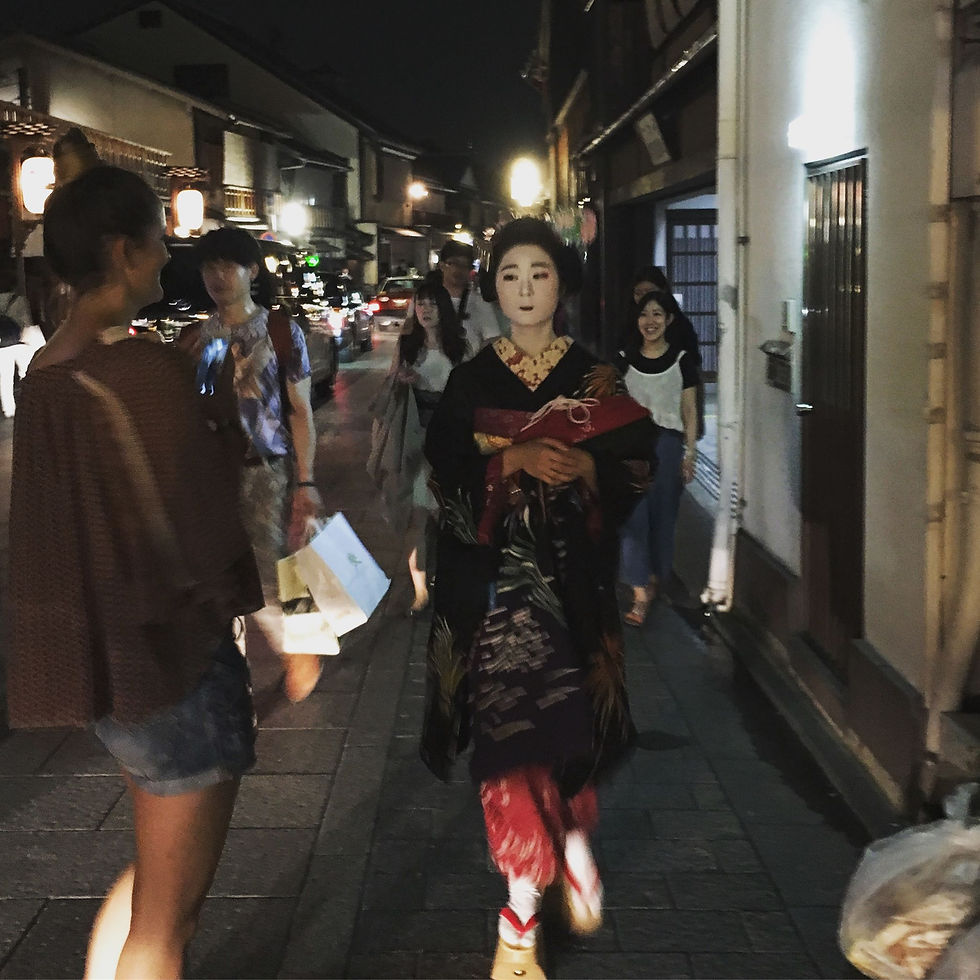
The second day in Kyoto was going to consist of a large amount of travelling. But first we had to see the festival parade. The procession of floats (山鉾巡行) looked similar to the ones we had seen in Fukuoka, however these floats were being pulled not carried and there was no racing involved. I must admit I preferred the excitement of the race atmosphere in Fukuoka's parade. Another thing that was different about Kyoto's parade was that we saw some foreigners in this parade.
We then caught a train into Nara (奈良). According to the Lonely planet guide Nara is one of the country's most rewarding destinations. As Japan's first permanent capital Nara is home to eight Unesco World Heritage Sites. Like Miyajima, Nara is home to a number of wild deer. People here are encouraged to feed them, with vendors selling deer biscuits throughout the main park. One gentleman gave us some of these biscuits so we could learn how to make the deer bow. It is actually really easy, all you have to do is hold a biscuit above a deer's head and it will bow three times. After feeding the deer some more we went to see the Tōdaiji (東大寺), or as it is called in English the Great Eastern Temple.
Tōdaiji's main hall is the world's largest wooden building. This is even with the reconstruction in 1692 being only two thirds of the original buildings height. A 15metre tall Buddha sits within the temple and is said to represent Vairocana. There was also a large Bizuru (Pindola Bharadvaja) statue outside the temple. According to the scripture below the statue, Pindola was one of the sixteen arahats, who were disciples of the buddha. Pindola is said to have excelled in the mastery of occult powers. It is commonly believed in Japan, that when a person rubs part of the image of Binzuru and then rubs the corresponding part of their own body, the aliment will disappear.



One would assume that we would head back to Kyoto after spending majority of the day exploring Nara. However you would be wrong. We got back on a train to spend the evening in Osaka (大阪). We got off the train at Shinsaibashi (心斎橋), the largest shopping area in Osaka. Here we had free time, to get dinner and look around. I went with a large group to get Italian, before Jackie, Brianna and myself went off to explore the shops. One famous sign in particular in Osaka is the Glico man sign. Standing at 33metres tall, this 70 year old sign looked rather out of place with all the modern billboards surrounding it. As we stood on the Ebusu-bashi bridge, we watched many locals and visitors taking photos in front of this iconic sign.
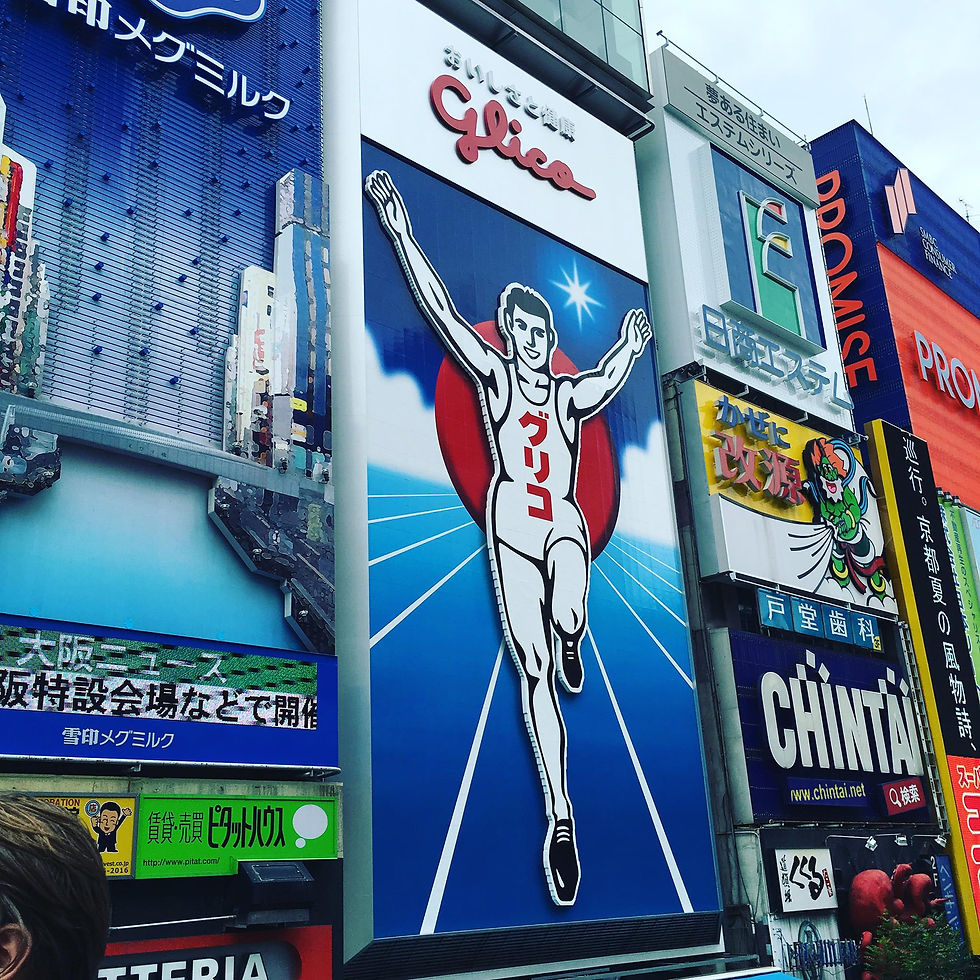
The next day was extremely humid, and was the first day I had really noticed the heat while being in Kyoto. As a group we had many areas we were to visit. It was also the last day we were all spending together as a group. The first place we went to visit was Kiyomizu-dera temple (清水寺). This temple is located halfway up Mt. Otowa (音羽山). It was built over 1200 years ago and as it was built upon the mountain, you can get some breathtaking views of the city from the temple. According to the temples website pilgrims come to pay their respects to Kannon, a deity of great mercy and compassion. The statue of the Eleven-headed Thousand-armed Kannon Bodhisattva is enshrined in the innermost section of the main hall.
One of the other main attractions is the Otowa Waterfall (音羽の滝). The clear waters that flow from the waterfall have long been called “Konjiki-sui” (golden water) or “Enmei-sui” (life-prolonging water). So together with Erin we lined up to purify ourselves. Unbeknownst to us we had accidentally cut in the line, which was very long and stretched into the distance. The three pure water streams which are said to give good health, longevity and wisdom to those who drink it. So once we got up to the flowing water we took our cups and chose a stream to take a sip. The water sure did taste clean. Now I guess I will have to wait awhile to find out if I was blessed with longevity or not. Fingers crossed cutting the line didn't nullify the positive effects we were meant to gain.




The next stop on this day was Kinkauji (金閣寺) or as it is known in English "The Golden Pavilion". So why is it called the Golden Pavilion? I believe it is due to the fact that the top two floors are completely covered in gold leaf. It looked stunning as the sunlight hit the building. Unfortunately the heat had become overbearing for many of the group, so a well deserved ice cream break was in order. I even noticed I was sunburnt, for the first time on the trip.

After eating a large amount of ice cream, we headed to the final destination of the day. Fushimi Inari Shrine (伏見稲荷大社), this place was definitely my favourite stop of the day. I would also say it is more than likely the most popular shinto shrine in Kyoto. This shrine is most famous for the thousands of Torii gates that wind up the mountain. Fushimi Inari Shrine is the most important shrine dedicated to Inari, the Shinto god of rice. Foxes are thought to be Inari's messengers, resulting in many fox statues across the shrine grounds. As we were only here for thirty minutes, we didn't venture to far up the mountain. Then it was time for the last group dinner on the trip and lucky for us we walked back past the shrine under the cover of darkness. Being lit up at night gave it a different vibe, creepy almost like anything could come out of the shadows.

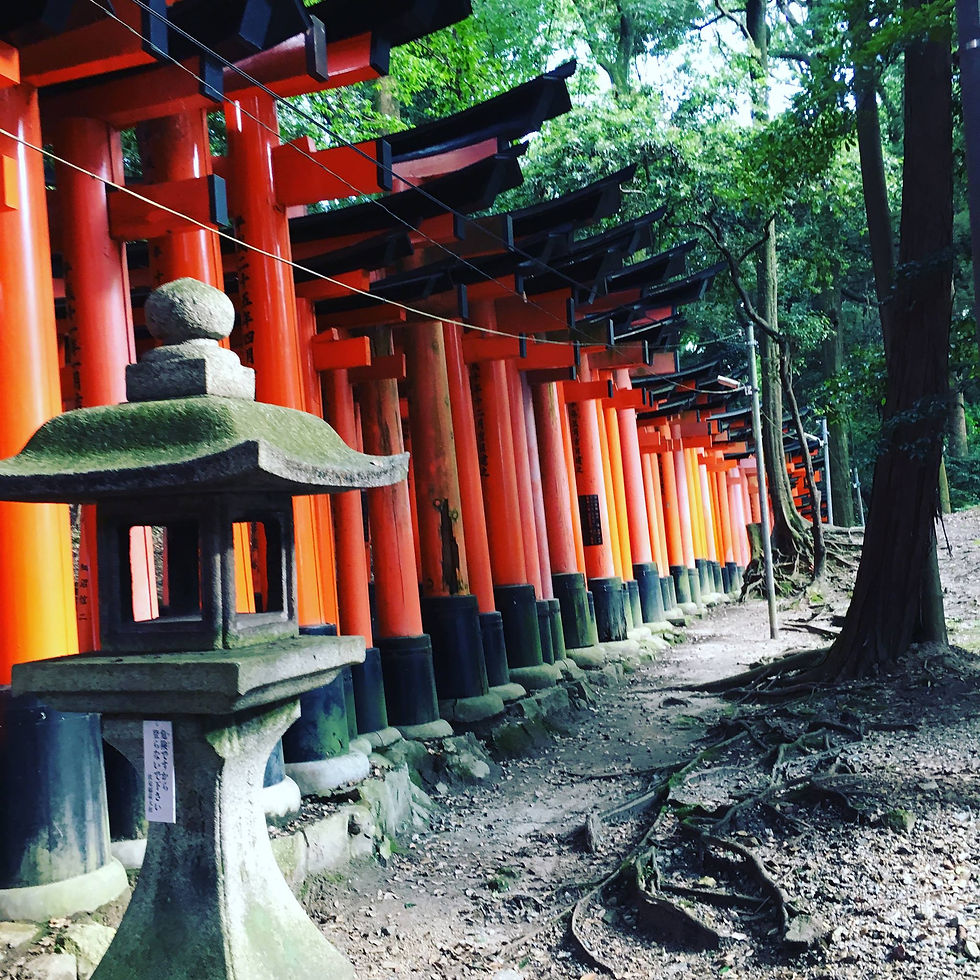
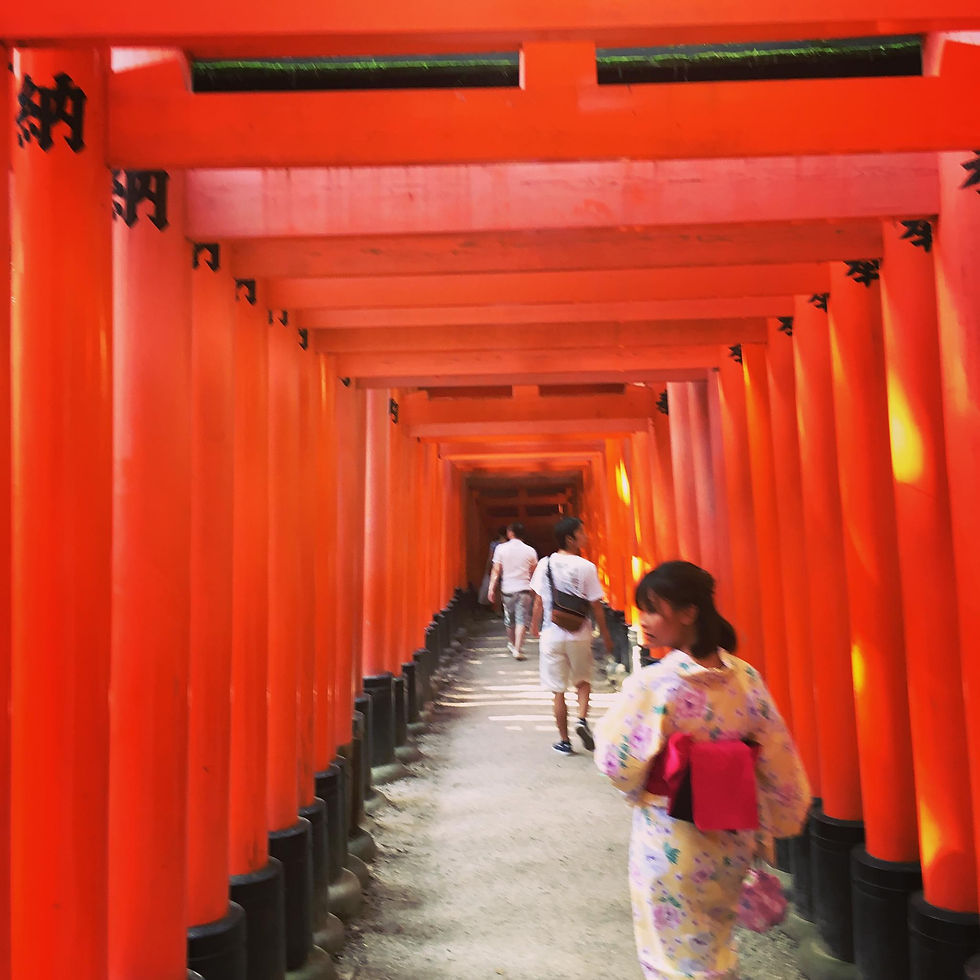

Then before I knew it, it was our last free day in Kyoto. I started the morning off by myself, exploring the nearby Buddhist temple Higashi Honganji (東本願寺). While I was exploring a lovely gentleman came running up to me, his hands full of pamphlets filled with information for me to read. He seemed very excited to see me there so early in the morning, enjoying the temple. One interesting thing I read from one of the pamphlets was that Higashi Honganji, has another official name Shinshu Honbyo. This name literally translates to "The principle mausoleum of the pure land of teaching".
Sam, Ollie and myself had decided to spend the morning in Arashiyama (嵐山). So once I returned from the temple we made our way there. The main reason to head out here is to visit the bamboo grove. This place is special, it even made it onto the cover of Lonely Planet's Japan 2013 edition. I honestly felt like I was in another world, standing among these tall bamboo trees. Lucky for us we had arrived there before it got to busy. We then walked through the nearby park and along the water until we reached Togetsu-kyo Bridge. Another famous landmark in Arashiyama. According to the sign at the bridge, it was believed to be built in 836. The name Togetsu means ' Crossing Moon", and is said to have been given by retired Emperor Kameyama, as he observed the moon crossing the sky from east to west. In 2005 the bridge got a modification, I guess you could almost call it an upgrade. Fusing old with new. It was when the hydro-power station was built along the river. The water from the river is now used to generate electricity for the foot lights illuminating the bridge as the sun sets.

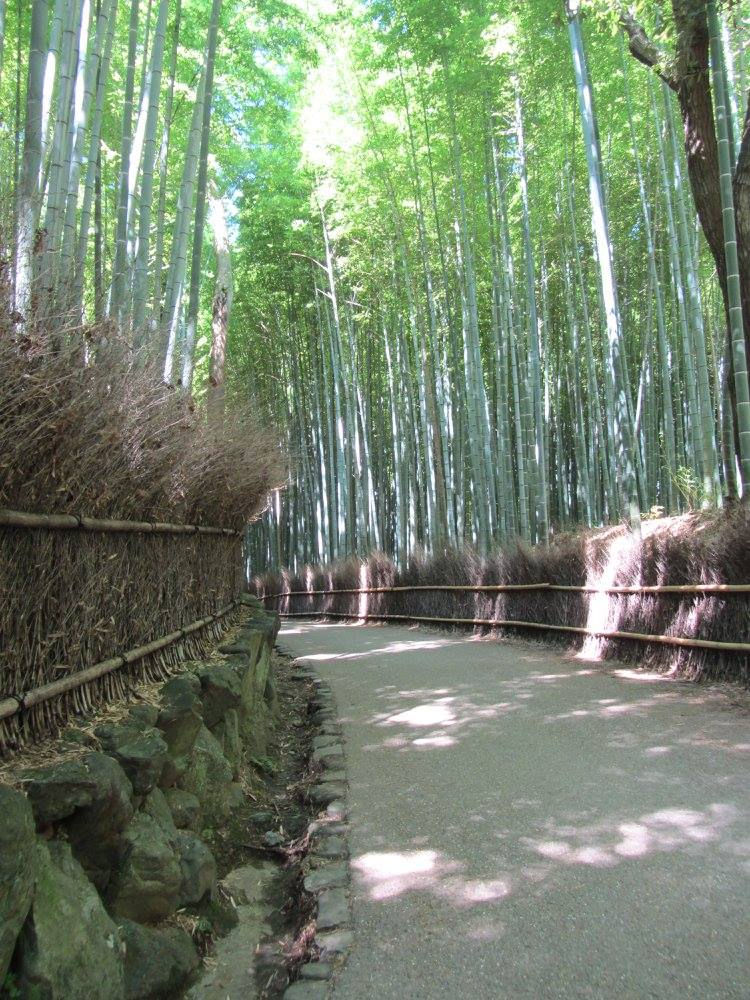
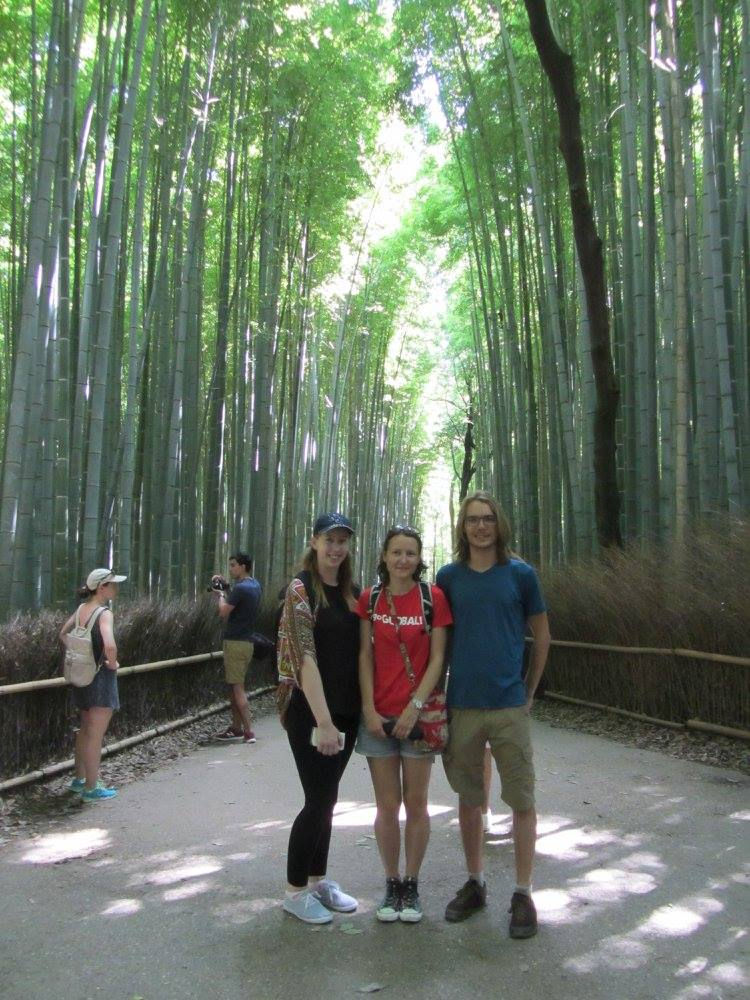


We then proceeded to cross the bridge before hiking up a mountain to see the wild monkeys. The monkey park was rather busy, with tourists taking the opportunity to hand feed the monkeys. The park is home to Japanese macaque (Macaca fuscata), or snow monkey for short. The staff told us that there was approximately 140 monkeys living in the park. We were lucky enough to even see some babies who were adorable. Now while visiting the park there were three rules to abide by for both our safety and the monkeys safety:
1. Do not touch the monkeys.
2. Don’t stare into the monkeys eyes.
3. Don’t feed the monkeys outside the hut.
So with that in mind we enjoyed our selves here. I especially enjoyed feeding the monkeys pieces of apple inside the hut. The monkeys hand was so small and furry. After spending some time at the park we ventured back down the mountain and headed back to Kyoto.


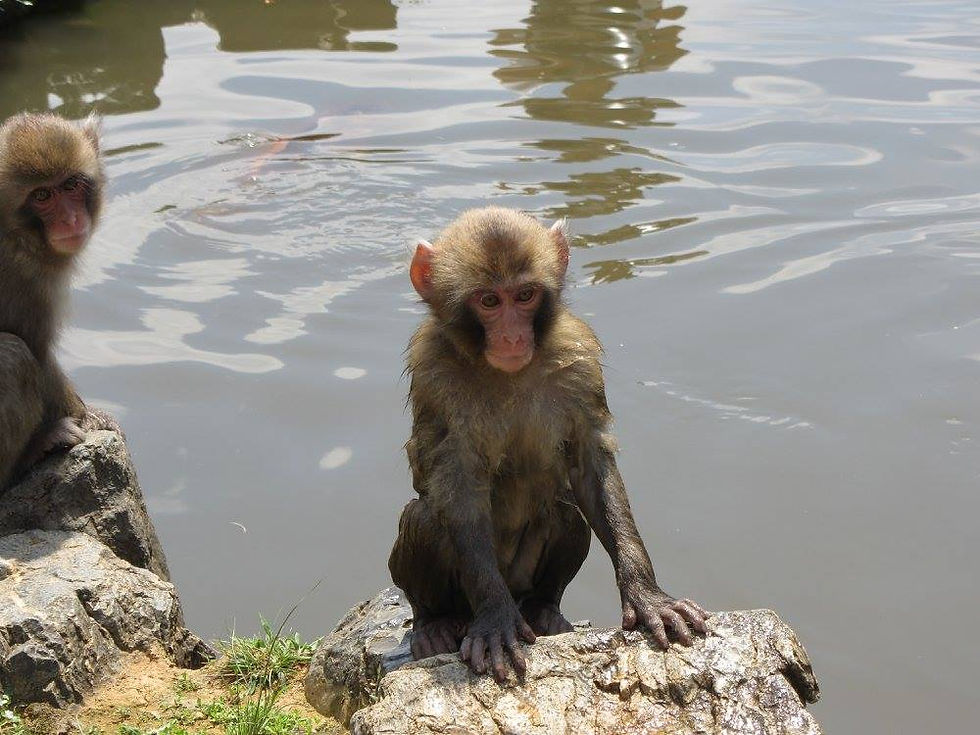
Once back in Kyoto, I ventured on my own to do some last minute shopping. After spending almost all my money, I decided to go visit yet another Japanese Garden. This garden was actually in one of the pamphlets I was given, so I thought I may as well check it out. The Garden was called Shōsei-en (渉成園). Upon arrival I was asked to pay a small entrance fee and in return I was given a booklet containing information and photo's of the garden. In the booklet I learnt that the name Shōsei-en was taken from a line in a famous Chinese poem 'Let Me Return Home Again' by Jin dynasty poet Tao Yuamming: "Ah, how much I enjoy strolling in the garden everyday". The garden itself was the smallest I had seen since arriving in Japan, but despite it's size it had a quaint charm about it. I spent about thirty minutes here just enjoying the peaceful atmosphere.
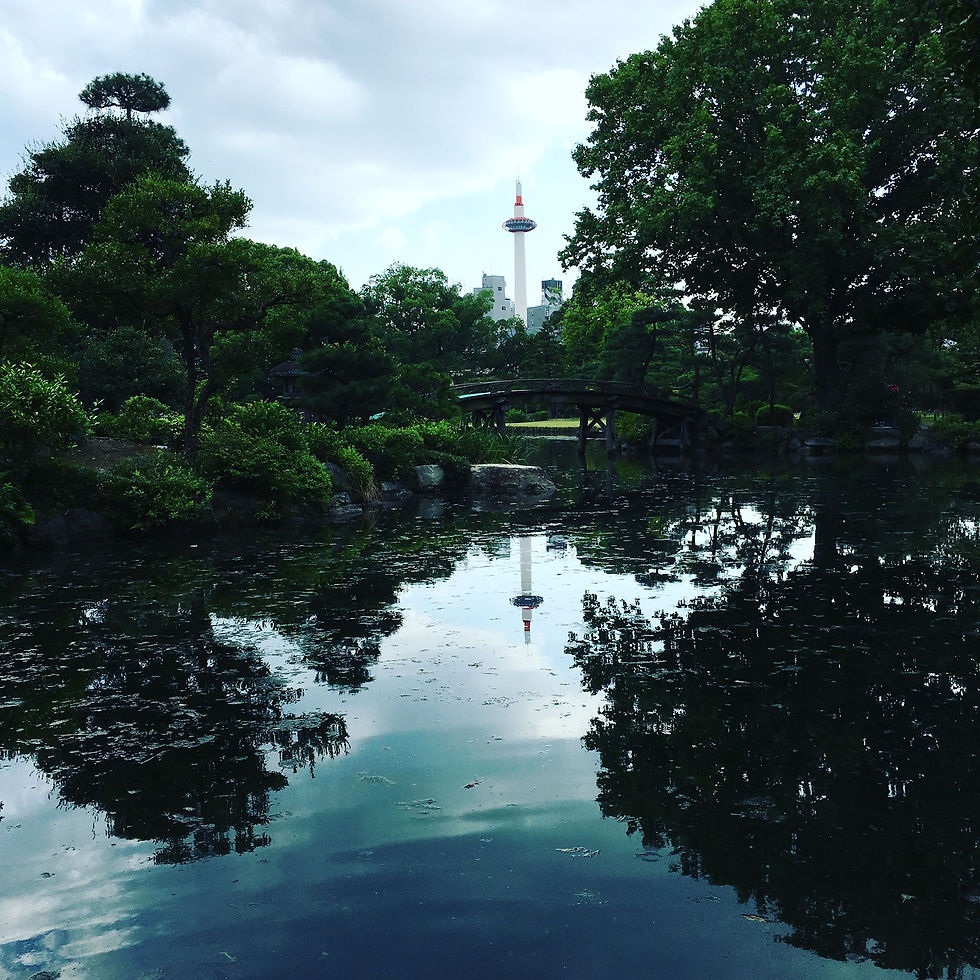
I suppose by now you are thinking I was done for the day? Well you would be wrong, I had one more thing I really wanted to do on my list. That was to go up the top of Kyoto Tower to enjoy the sunset. I must say the photo's I took did not do it justice. Kyoto Tower is actually the World's tallest non steel frame construction, and if that isn't impressive enough it is also home to the highest shrine in Kyoto, the Tawawa-chan Shrine. I then joined Dom and Brianna for our last dinner in Japan.
And with that our last day in Japan had arrived, the morning was spent packing, shopping and eating food before we made our way to the airport. So I guess that is the end of my blog! It seems impossible to summarize the tour. I learnt so much and met some of the most amazing people while on my journey. So for now it's goodbye but Japan I will be back. じゃあね



1. https://www.lonelyplanet.com/japan/kansai/nara
2. https://www.japan-zone.com/culture/geisha.shtml
3. http://www.kiyomizudera.or.jp/en/
4. http://www.lonelyplanet.com/japan/kansai/kyoto/sights/religious/fushimi-inari-taisha
5. http://monkeypark.jp/en/intro/
6. https://www.kyoto-tower.co.jp/en/


Comments